Black Swallowtail Butterflies New Jersey: Discover Presence!
The Black Swallowtail butterfly (Papilio polyxenes) thrives in New Jersey, recognized by its yellow spots, blue crescents, and white forewing spots.
With a wingspan of 8 to 11 centimeters, it relies on host plants like parsley and dill for egg deposition and larval development. These butterflies undergo remarkable lifecycle stages from egg to adult, adapting seasonally for diapause.
They’re vital pollinators, using their long proboscis to access nectar, thereby promoting genetic diversity. Conservation efforts focus on habitat restoration and reducing pesticide use.
Visit meadows, gardens, and parks for the best observation opportunities, especially in early morning or late afternoon. To discover more.
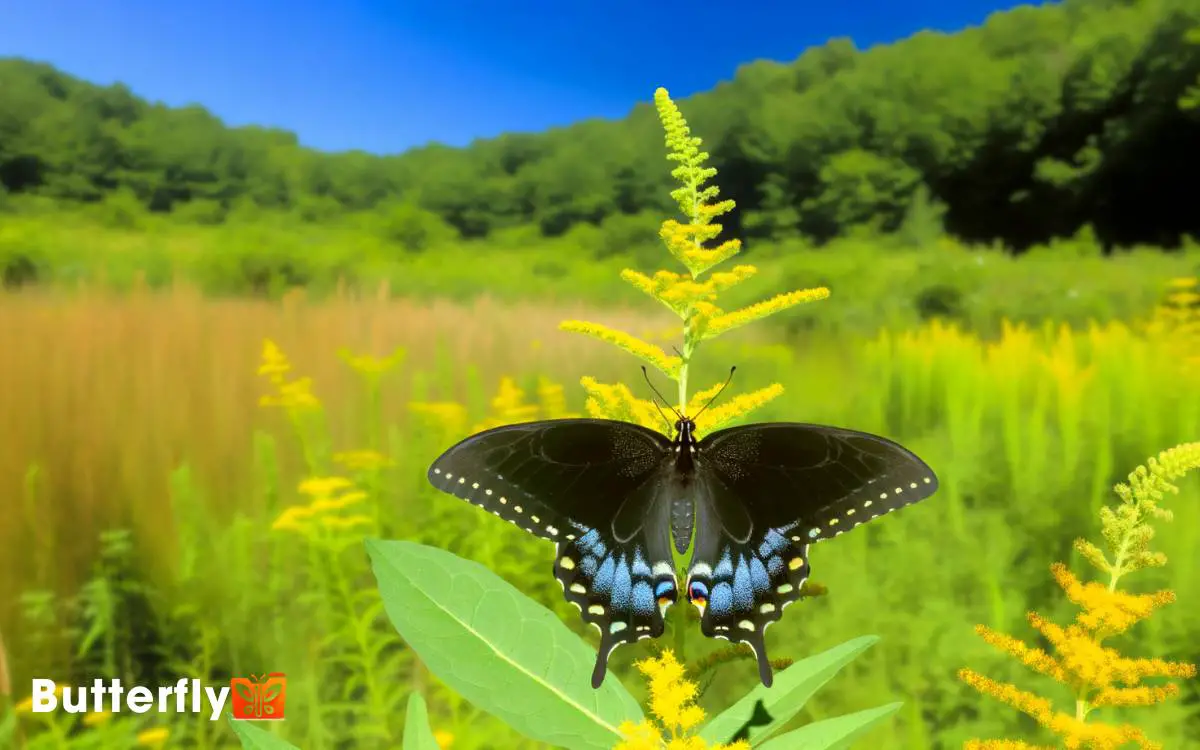
Key Takeaways
Identification and Features
The Black Swallowtail butterfly, scientifically known as Papilio polyxenes, exhibits distinctive physical features including striking black wings adorned with yellow spots and a characteristic row of blue crescents along the hindwings.
The forewings display prominent white spots interspersed within the yellow, enhancing the contrast.
Sexual dimorphism is evident; males possess more vibrant yellow markings, whereas females exhibit larger blue crescents.
The wingspan ranges from 8 to 11 centimeters, contributing to their graceful flight. Antennae are clubbed, facilitating sensory reception.
The ventral side of the wings reveals a more muted palette, aiding in camouflage. Such precise identification is important for entomologists and enthusiasts, ensuring accurate field observations and fostering an appreciation for the butterfly’s intricate beauty and ecological role.
Lifecycle Stages
The lifecycle of the Black Swallowtail butterfly in New Jersey comprises several distinct stages:
- Egg: Initially, the female deposits her eggs on host plants, which hatch into larvae that undergo multiple instars.
- Larva: Following the larval phase, the caterpillar forms a chrysalis during the pupa stage.
- Pupa: Ultimately, this leads to the emergence of the adult butterfly.
Egg to Larva
Upon being laid on host plants, Black Swallowtail butterfly eggs undergo a series of rapid cellular divisions, initiating their transformation into larvae. This stage, lasting about 4-10 days, is crucial for the species’ survival. The eggs, usually pale yellow, darken as they mature.
Inside, embryonic development progresses through carefully timed mitotic cycles, resulting in a fully-formed larva ready to emerge.
Once hatched, the larva, or caterpillar, immediately starts feeding on the host plant material. This early feeding stage guarantees the accumulation of energy reserves essential for subsequent growth and development.
The larval stage comprises five instars, each marked by molting and increased size. This meticulous process underscores the Black Swallowtail’s adaptability and resilience in New Jersey’s diverse ecosystems.
Pupa Development Phase
During the pupa development phase, the Black Swallowtail caterpillar undergoes a remarkable transformation within the chrysalis, where cellular reorganization and differentiation occur, leading to the formation of adult structures.
Metamorphosis involves the breakdown of larval tissues and the formation of new tissues through histolysis and histogenesis. This phase is facilitated by the hormonal regulation of ecdysteroids and juvenile hormones.
| Developmental Aspect | Description |
|---|---|
| Duration | Approximately 9-14 days |
| Key Processes | Histolysis, Histogenesis |
| Hormonal Regulation | Ecdysteroids, Juvenile Hormones |
| Environmental Factors | Temperature, Humidity, Photoperiod |
The pupa, or chrysalis, remains motionless, but internally, it is a hub of activity.
Environmental factors such as temperature and humidity play a crucial role in influencing the duration and success of this stage, ensuring favorable conditions for the eventual emergence of the adult butterfly.
Adult Butterfly Emergence
As the internal processes within the chrysalis reach completion, the adult Black Swallowtail butterfly emerges, marking a crucial phase in its lifecycle.
This emergence, known as eclosion, begins with the butterfly breaking through the hardened chrysalis shell.
The newly emerged butterfly initially has crumpled wings, which it must expand and harden. It accomplishes this by pumping hemolymph through its wing veins, a process that takes several hours. During this time, the butterfly is vulnerable to predators and environmental hazards.
Once the wings are fully expanded and dried, the butterfly’s exoskeleton hardens, and it becomes capable of flight.
This stage is essential for dispersal, mating, and subsequent reproduction, ensuring the continuation of the species in New Jersey’s diverse ecosystems.
Preferred Habitats
Black Swallowtail butterflies in New Jersey exhibit distinct habitat preferences based on the availability of host plants like parsley and dill, which are essential for larval development.
These butterflies also adapt to seasonal habitat changes, favoring open fields and gardens in the spring and summer while seeking sheltered areas during colder months.
Understanding these preferences is important for conservation efforts and ensuring their survival amidst changing environmental conditions.
Host Plant Preferences
Swallowtail butterflies in New Jersey exhibit a strong preference for host plants such as parsley, dill, fennel, and Queen Anne’s lace, which are typically found in open fields, gardens, and meadows.
These plants provide essential nutrients for the larvae, facilitating their growth and development.
The chemical composition of these plants, rich in essential oils and nutrients, makes them ideal for supporting the caterpillars’ metabolic needs.
Additionally, these plants’ structural characteristics offer ideal conditions for egg-laying and subsequent larval protection.
Analyzing their host plant preferences reveals an intricate relationship between the butterflies and their environment, highlighting the importance of plant availability and diversity in maintaining healthy butterfly populations.
This preference for specific host plants underscores the ecological intricacies within these open habitats.
Seasonal Habitat Changes
Understanding the host plant preferences of swallowtail butterflies sets the stage for examining how their habitats shift seasonally to accommodate their life cycle needs.
In New Jersey, Black Swallowtails favor open fields and meadows in spring and summer for their abundance of nectar sources and host plants like dill, parsley, and fennel. These environments support larval development and adult feeding.
As autumn approaches, they migrate to sheltered areas such as woodlands and gardens to find suitable overwintering sites. These seasonal movements guarantee they exploit ideal conditions for survival and reproduction.
Habitat fragmentation and climate change pose challenges, making conservation efforts essential to maintaining these dynamic ecosystems that Black Swallowtails depend on throughout the year.
Seasonal Behavior
Throughout the year, the black swallowtail butterflies exhibit distinct behavioral patterns that are closely tied to the changing seasons in New Jersey.
During spring, they emerge from their chrysalises, seeking nectar and mates. Summer sees increased activity as females lay eggs on host plants like dill and fennel.
Come fall, caterpillars enter diapause, a state of suspended development, to survive winter’s cold. By understanding these seasonal behaviors, one can predict their presence and activity.
| Season | Key Behavior |
|---|---|
| Spring | Emergence, mating |
| Summer | Egg-laying, increased feeding |
| Fall | Diapause preparation |
| Winter | Diapause (suspended state) |
Their cyclical activities reflect their adaptability and resilience, allowing them to thrive across seasons.
Role in Pollination
In addition to their striking appearance, black swallowtail butterflies play an essential role in pollination by transferring pollen as they feed on nectar from various flowers.
Their long proboscis allows them to access deep floral nectaries, facilitating cross-pollination. This process enhances genetic diversity among plant species, promoting healthier ecosystems.
Black swallowtails are particularly attracted to flowers like milkweed, thistle, and clover, which are prevalent in New Jersey.
By visiting multiple flowers in a single foraging trip, they guarantee effective pollen distribution. Their activity boosts the reproductive success of native flora, which, in turn, supports other wildlife.
Consequently, the presence of black swallowtail butterflies is crucial for maintaining ecological balance and biodiversity in New Jersey’s natural habitats.
Conservation Efforts
Conservationists in New Jersey employ various strategies to protect black swallowtail butterflies, focusing on habitat restoration, pesticide reduction, and public education initiatives.
By restoring native plant habitats, they guarantee the butterflies have ample food sources and breeding grounds. Reducing pesticide use is critical, as chemicals can decimate butterfly populations.
Public education initiatives aim to raise awareness about the importance of these pollinators and how individuals can contribute to their conservation.
| Strategy | Description |
|---|---|
| Habitat Restoration | Planting native species and creating butterfly gardens. |
| Pesticide Reduction | Promoting organic farming and reducing chemical use. |
| Public Education | Workshops, seminars, and informational campaigns. |
These efforts collectively foster a supportive environment for the black swallowtail’s survival and proliferation.
Threats and Challenges
Despite robust conservation efforts, black swallowtail butterflies in New Jersey face significant threats and challenges that jeopardize their long-term survival. Habitat loss due to urbanization and agricultural expansion has severely impacted their populations, reducing the availability of host plants essential for their larvae. Additionally, climate change and pesticide use pose further risks, making it increasingly difficult for these butterflies to thrive. Given these challenges, many people ask, are black swallowtail butterflies endangered, highlighting growing concerns about their future in New Jersey.
Habitat loss due to urban development disrupts their breeding sites and reduces access to essential host plants like parsley and dill.
Pesticide use, particularly neonicotinoids, severely impacts their larval stages, impairing growth and increasing mortality rates.
Climate change exacerbates these threats by altering temperature and precipitation patterns, leading to mismatched timing between butterfly emergence and plant availability.
Additionally, invasive plant species outcompete native flora, further limiting their food sources. Predation from birds and parasitic wasps also contributes to declining populations.
Addressing these multifaceted threats requires integrated conservation strategies and public awareness to safeguard their persistence.
Observing Tips and Locations
Nature enthusiasts seeking to observe black swallowtail butterflies in New Jersey should prioritize visiting habitats rich in nectar plants such as milkweed and thistle, as these locations provide essential food resources.
Ideal observation sites include meadows, gardens, and edges of woodlands where these plants thrive.
Early morning and late afternoon are the best times for sightings, as the butterflies are most active during these periods.
Observers should also consider visiting state parks like High Point and Liberty State Park, where conservation efforts have led to flourishing butterfly populations.
Patience and a keen eye are essential, as the butterflies’ erratic flight patterns can make them elusive. Using binoculars can enhance the viewing experience, allowing for detailed observation without disturbing the butterflies.
Conclusion
Just as the black swallowtail butterfly navigates the delicate dance of its lifecycle in New Jersey, so too must we tread carefully in our conservation efforts.
By understanding their habitats, behaviors, and the threats they face, we can guarantee these pollinators continue to grace our gardens.
Their journey mirrors our own: a proof of resilience and adaptation in a changing world.
Let’s be the stewards that allow their vibrant wings to flutter through our skies for generations.

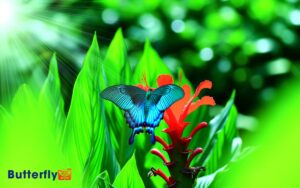
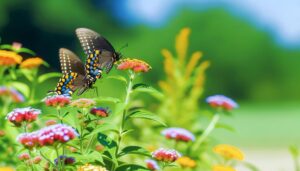

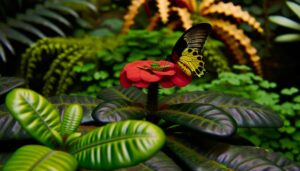
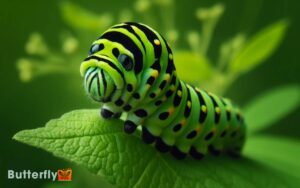

Your point of view caught my eye and was very interesting. Thanks. I have a question for you.
Thanks for sharing. I read many of your blog posts, cool, your blog is very good.
Your article helped me a lot, is there any more related content? Thanks!
Thanks for sharing. I read many of your blog posts, cool, your blog is very good.
Thanks for sharing. I read many of your blog posts, cool, your blog is very good.
Happy to explore discussions, exchange ideas, and pick up new insights throughout the journey.
I enjoy learning from different perspectives and sharing my input when it’s helpful. Happy to hear different experiences and meeting like-minded people.
That’s my web-site:https://automisto24.com.ua/
Happy to join conversations, share thoughts, and pick up new insights throughout the journey.
I enjoy understanding different opinions and adding to the conversation when possible. Happy to hear new ideas and meeting like-minded people.
There is my site-https://automisto24.com.ua/